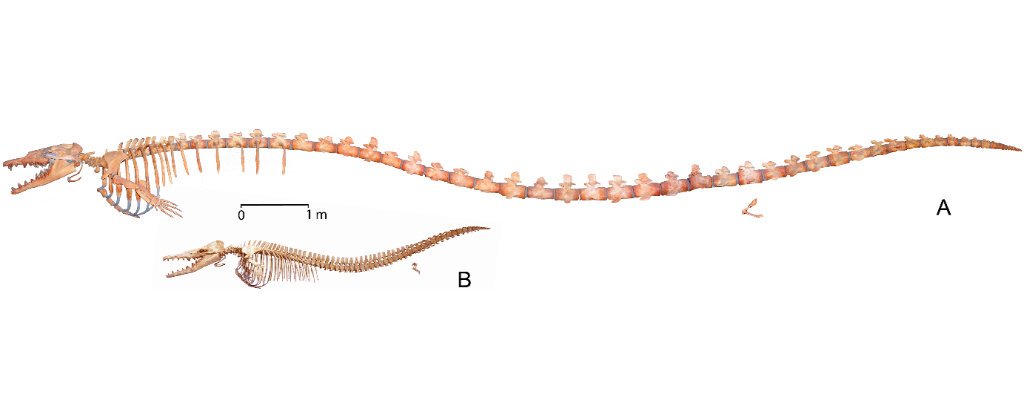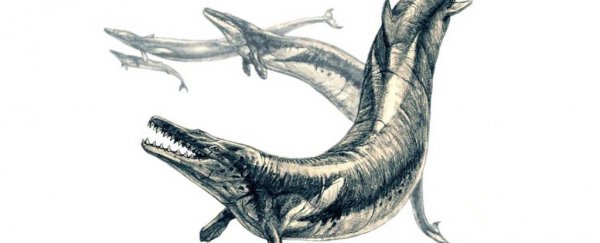We usually think of whales as serene, gentle creatures, but a new study on an ancient species paints a different picture.
Around 35 million years ago, in the late Eocene, a giant whale roamed the oceans, feasting on large fish and, the new evidence suggests, other smaller whales. Yikes.
Discovered in 2010, this 15 metre (50 foot) ancient whale specimen (Basilosaurus isis) has been linked to the nearby remains of sharks, fish, and juveniles of a smaller species of ancient whale called Dorudon atrox.
 (PLOS One)
(PLOS One)
It turns out these specimens weren't all just found fossilised near each other – the smaller remains were actually B. isis' prey.
B. isis was a fearsome creature, living between 34 and 38 million years ago, and specimens have been found that were a whopping 15- 18 metres in length (50-60 feet).
For comparison, orcas are between 5-7 metres long (16-23 feet) and humpback whales range from 13-16 metres (43-52 feet).
"B. isis itself had a long snout and was armed with pointed incisors and sharp cheek teeth," first author Manja Voss, a marine mammal researcher at the Berlin Museum für Naturkunde, told Live Science.
The remains were discovered in Wadi Al-Hitan, which translated from Arabic means 'Whale Valley', southwest of Cairo in Egypt.
It's a World Heritage Site due to the amount of amazing ancient whale fossils found in the area. Although the valley is dry now, in the Eocene, it was a shallow sea with all sorts of sea creatures frequenting the area.
The fossils are also not usually hard to find – sometimes their bones are right there on the surface exposed by erosion.
When this B. isis fossil was found it was dug up with a number of other fossils, from sharks, large bony fish, and juvenile whales.
Initially it was hard to tell whether B. isis was either a scavenger – finding carcasses of already dead animals and eating them – or a predator, hunting down its prey live in the same way that orcas (Orcinus orca) do today.
But new examination of the smaller whale skeletons in this area gave a clearer, and creepier conclusion.
In Wadi Al Hitan, all of the B. isis skeletons were adult, but about half of the D. atrox were juveniles.
Finally, the skull bones of D. atrox had bite marks.
What the researchers found was the first direct evidence of the diet of B. isis including D. atrox in a way that is very likely predatory.
"These observations led to the idea that the late Eocene shallow sea covering what is now Wadi Al Hitan was a calving area for Dorudon, and, related to this, a feeding area for predatory Basilosaurus," the team, also from the University of Michigan and the Egyptian Department of Geology and Paleontology, explain in their new paper.
"Here we augment this finding by describing remains of juvenile Dorudon atrox and remains of large fish found as stomach contents in a Wadi Al Hitan skeleton of Basilosaurus isis."
So instead of being scavengers, they were likely apex predators, in the same way that orcas are today.
Orcas are well known for their intelligence but also their hunting habits, which includes preying on seals, dugongs, and grey and humpback whale calves.
Our oceans really are a brutal, yet majestic place - even 35 million years ago.
The research has been published in PLOS One.
